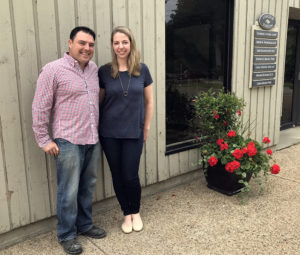 Editor’s note: This is the third in a series of pieces by Town Moderator Sarah Cannon Holden about preparations and procedures for the Special Town Meeting on June 9. The other letters appear here and here.
Editor’s note: This is the third in a series of pieces by Town Moderator Sarah Cannon Holden about preparations and procedures for the Special Town Meeting on June 9. The other letters appear here and here.
To the editor:
By now you should have received your Special Town Meeting Warrant with the two aBy now you should have received your Special Town Meeting Warrant with the two articles to be considered on June 9th. There is very important background information. Please read it carefully so you can come as prepared as possible for the discussion and voting on Saturday. It contains the meeting’s agenda as well as overview of what we will need as we delve further into the issues, choices and considerations before us. Also included in the mailing is an explanation of the voting process. Read it carefully and bring it with you to the meeting. Please note that while there will be a presentation and update regarding the community center, there will not be a vote.
Now let’s get into the rules of the meeting.
There will be presentations be several boards and committees. Discussion, questions and answers, votes and more votes will follow. The procedural rules and voting procedures will, hopefully, be the containers to hold it all together. Many will want to speak, so everyone must limit their time at the microphones to two minutes. Twenty-five people at two minutes each takes close to one hour, despite what the mathematical calculation tells you. I suspect that more than 25 people will want to speak.
General meeting rules
Motion to Amend—If you wish to amend something, you must first fill out the Amendment Form found on the table at the center of the auditorium and present it to town counsel, who will be seated on the stage with the moderator.
- Once the wording has been settled upon, you may go to the line for the microphone, state you name and address, and make your amendment.
- The motion requires a second.
- We will then have discussion of the amendment and vote on it. I will ask for a voice vote. It requires a simple majority to pass.
- If it passes, then we will discuss the main motion as amended; if it does not pass, we will go back to the main motion.
Move the question—If you wish to ask the meeting to go directly to a vote on the main motion, you must go to a microphone, state your name, and move the question.
- The motion requires a second.
- You may not speak or ask a question before you make the motion.
- Such a motion is not debatable.
- I will ask for a voice vote. It requires a two-thirds vote to pass.
- Results of votes in both the gym and the auditorium will be calculated. If it passes we will go directly to a vote on the main motion.
The moderator has the discretion to deny the motion to move the question if she feels that there has not been sufficient discussion. For example, if someone were to rise after 10 minutes of discussion, the moderator is likely to find that this is too soon for such a motion.
Point of order—If you wish to challenge some perceived procedural error, you may rise without being recognized by the moderator and announce a “point of order.”
- Give your name and street address.
- State your point.
- The moderator will consider your point and rule on it.
On Wednesday, I will send out the voting guidelines for the votes we will be taking on June 9.
Reminder: You may check in starting at 8:15 a.m. We will start the meeting promptly at 9:30.
Sincerely,
Sarah Cannon Holden, town moderator
Weston Road.






